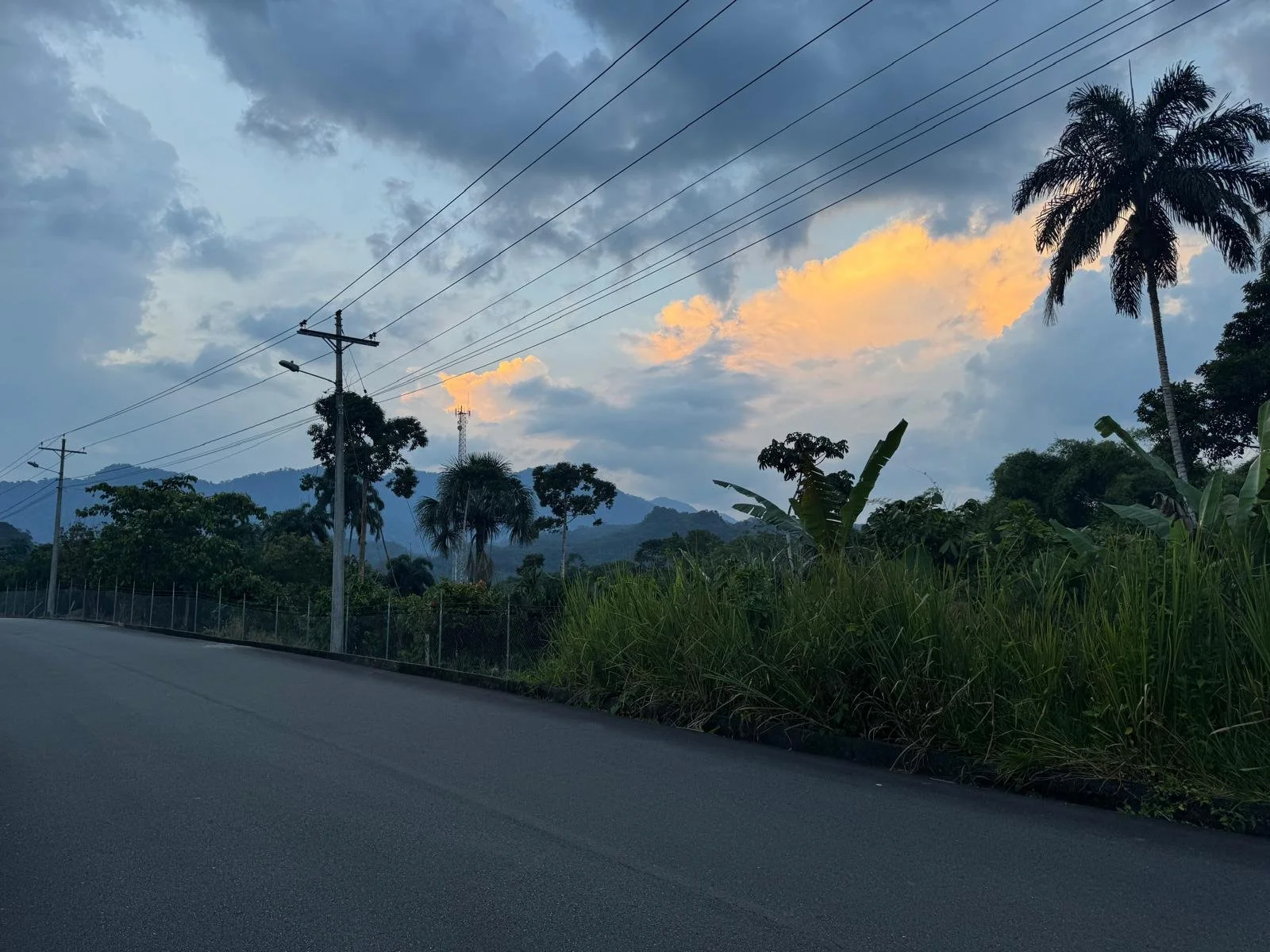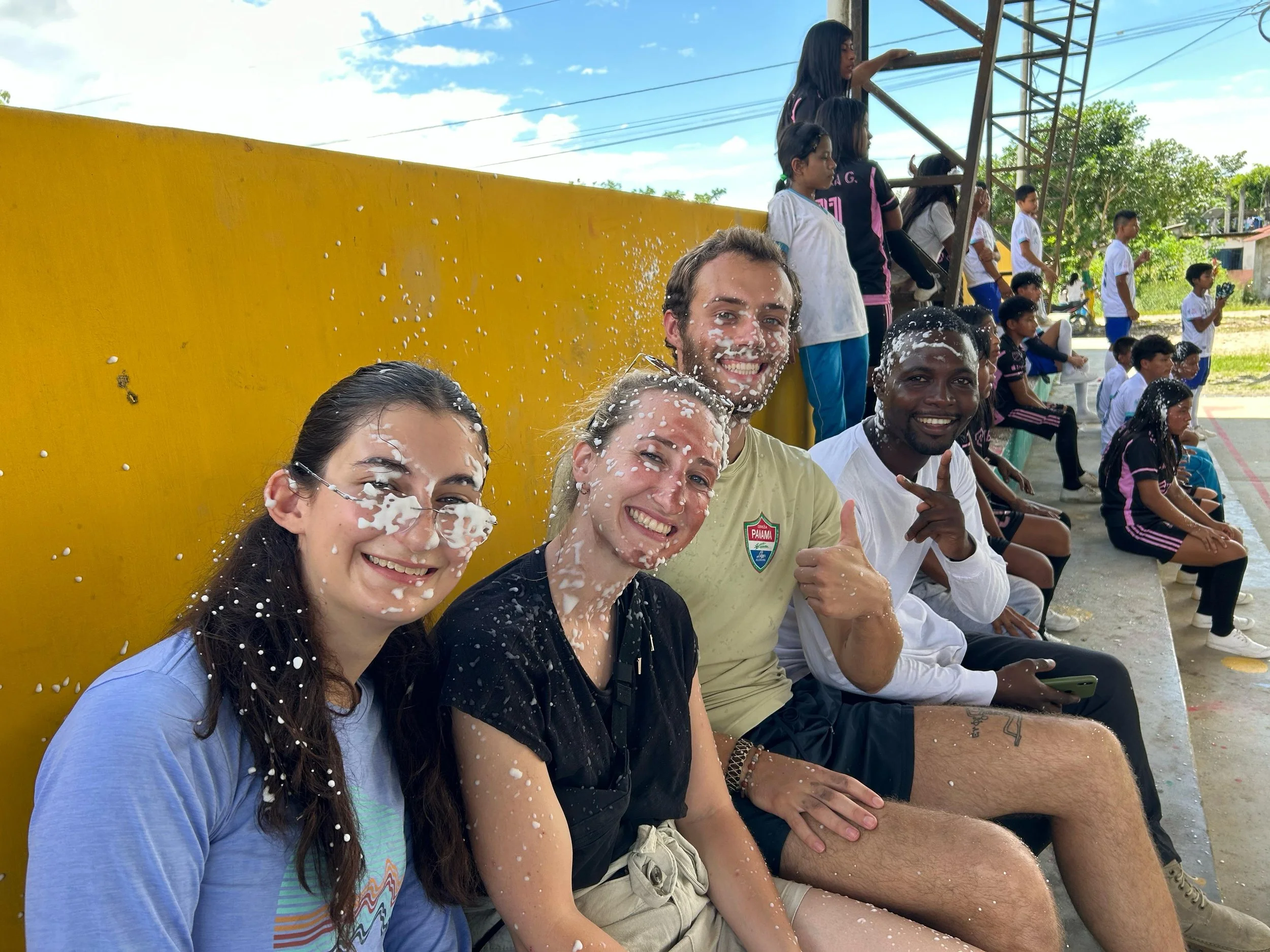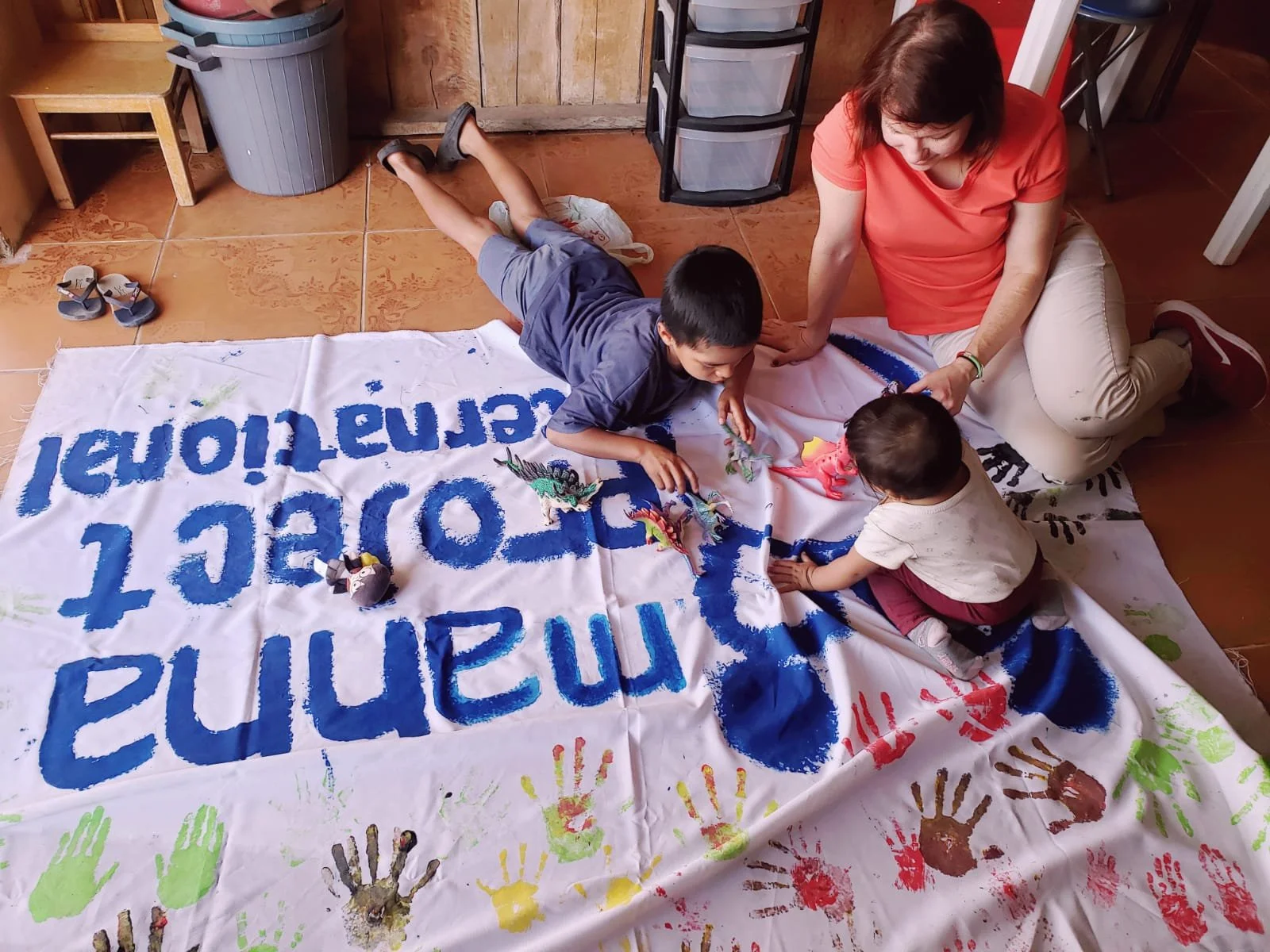By: Nidhi Prakash, PC ‘25
Finding Fulfillment in Shandia: Lessons from My First Months as a Public Health Coordinator
I arrived in Shandia on August 1, as a Public Health Program Coordinator. Coming in, I felt ready to put my skills from my public health coursework, volunteering experiences, and prior time living abroad to use. However, I quickly realized that no matter how much preparation, the most important things I can have as a volunteer are curiosity and open-mindedness. With this realization, I have been able to have some of the most fulfilling times here.
One of my most meaningful experiences for me was teaching yoga to our seniors. In partnership with the Gobierno Autonómo Descentralizado, MPI volunteers support Senior Group: a chance for community members over 60 to maintain their mental and physical health through art, movement, and collaboration. I was so happy to see the seniors enjoying themselves while also improving their strength and flexibility. I am especially grateful for this opportunity because alongside my work with MPI, I am earning my yoga teacher training certificate online. My heart was so full being able to simultaneously do something I love and help the health of the community.
A couple weeks later, I had a great experience working in the chakra of one of our community members. Alongside a tour of various plants, we made ahi, tried a sauna made out of leaves, harvested worms for our lunch, and created our own medicinal balms using plants we picked. I felt so excited to partake in things that I would have never thought of doing back home. This also deepened my appreciation for the ways traditional knowledge and public health practices can complement each other.
Another source of joy has been spending time with the children of Shandia. Whether helping with activities, playing outside, or simply sharing moments of laughter, I have found caring for the kids to be one of the most wonderful parts of my experience. Their energy, curiosity, and warmth are constant reminders of why this work matters and how important it is to invest in the next generation’s health and happiness.
I am so excited to continue learning and growing here in Ecuador! Each day brings something new. I am so grateful for this opportunity to experience a new way of life and connect with the community of Shandia.






